Scusate il copia e incolla veloce dell´intervista al designer Ronald Wild pubblicata sul nuovo magazine di bordo.
Lufthansa’s new look
Thirty years after the last makeover, the airline is revamping its corporate design. Lufthansa designer Ronald Wild talks about the timeless crane logo and how hard it is to draw a u.
Mr. Wild, what is it that makes the crane such an iconic emblem?
It’s a beautiful image of a bird, graphically simplified but nevertheless
full of grace. You can see that it was drawn by hand
rather than on a computer. In 1962, Otl Aicher placed it inside a
circle, a basic geometric shape that made it memorable and
turned it into a logo.
The Lufthansa emblem is a design classic, but the airline is
currently revamping its image...
The corporate identity of a long-established company has to be
timeless. Simultaneously, and this is where the challenge lies, it
has to suit its contemporary surroundings. Everything has
changed: the world, our society, the media – and Lufthansa has
naturally changed as well. That’s why we’re not just modernizing
our image. We’re modernizing the entire brand.
What a huge endeavor. Why now?
Because this year, the crane emblem celebrates its centenary!
It was the perfect time to ask ourselves: What does Lufthansa
really look like now? Not in the design handbooks but out there
at the airports. During this time, we tried out many variations.
Like a building that grows when you keep adding to it, each
modification is an improvement but lacks overall clarity and
homogeneity. We hadn’t changed the logo, typeface and colors
in 30 years, and now we're tying up all the loose ends.
What were the most important visible changes you made?
The crane emblem is now lighter and more dynamic. The new
blue is the dominant color; it’s an elegant hue with lots of depth.
The typeface has remained timeless, functional and easy to
read, but it now has an unmistakable character of its own.
Some of the changes are obvious, others are more subtle. But
seen as a whole, the way the different design elements interact
is a huge step forward.
One of the most difficult tasks you faced was developing a
new corporate typeface. What were some of the
considerations?
It had to suit Lufthansa. At one point, we all fell in love with a
variation of the letter U without a spur, but when we spelled the
words menu or Honolulu we soon realized that it didn’t have
enough weight. A typeface has to be suitable everywhere, from
the aircraft logo to the tiny details on a boarding card. This is
more difficult than you might think. The overall effect of a
typeface is subtle but crucial. It’s not the lead singer of a rock
band.
That would be the crane?
Yes, it should stand out more ... (he laughs). But actually, there
are no soloists, it’s more like a well-rehearsed ensemble.
What happened to the color yellow? Is the “fried egg” on the
tail a thing of the past?
That particular decision was not easy, but after a lot of thought,
we took it. Good design requires a dominant color and the new
blue we specially developed reflects Lufthansa’s image as a
premium airline just perfectly. We are reducing the amount of
yellow over all but we are improving the quality. Yellow remains
very close to our hearts.
How long will it be before every Lufthansa aircraft sports the
new look?
That will take a few years. Every plane will be repainted when
necessary from a technical perspective. There are about 700
items in the cabin alone! Take the coat hangers, for instance:
We’ll be leaving the old logo on them until they break and have
to be replaced. We want to proceed as responsibly as possible
in economic terms, too.
Your team spent many years re-imagining the brand. What
was the biggest struggle?
Letting go! The only thing that helped was to give myself time.
I took the designs home with me, hung them up in my kitchen
and allowed them to act on me. Some people will undoubtedly
regard the new design as too radical and others will say it isn’t
radical enough. But we developed it for all the true Lufthansa
fans out there.





